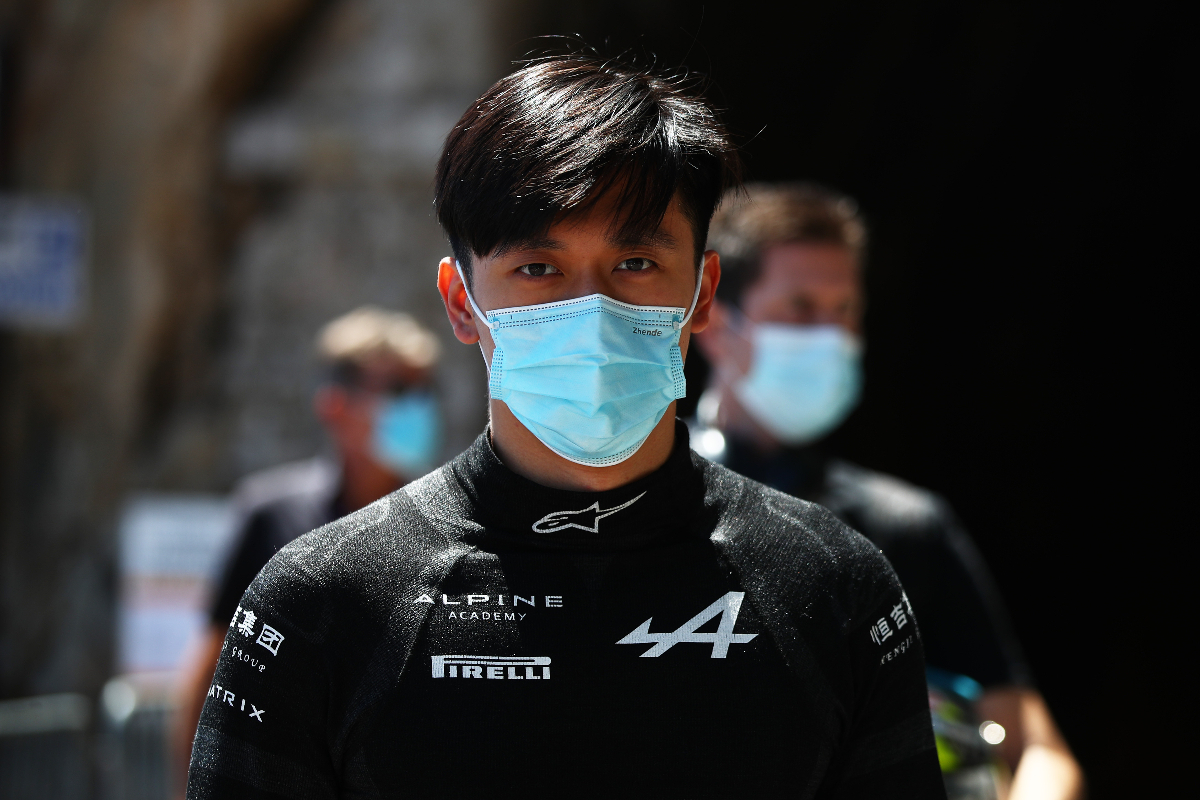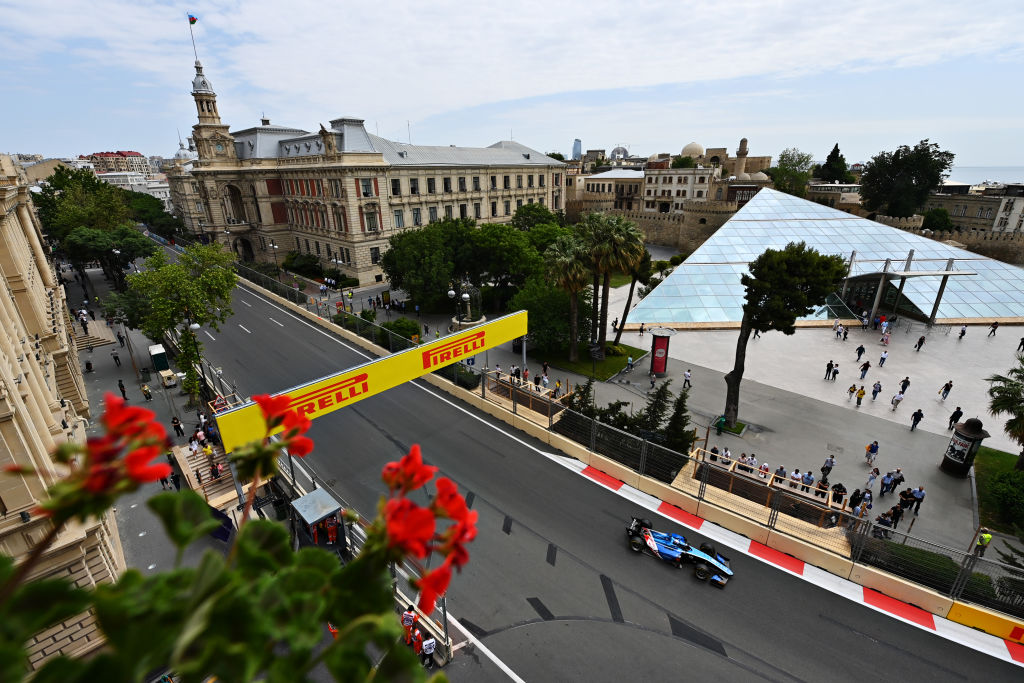
Photos: Formula Motorsport Limited
Alpine has no place for its Academy drivers in its 2022 Formula 1 line-up, so where do its F2 stars go now?
Once again, the Alpine Academy seems in total limbo. Esteban Ocon has been announced as spending a further three years racing for Alpine, a pretty solid amount of time in Formula 1 terms, while two-time world champion Fernando Alonso is all set to stay until the end of 2022 as well.
Does the news of Ocon’s new contract, ahead of both his and the team’s home grand prix in France, come as a major shock? Not really. The length, perhaps, but otherwise why should the team have not decided to carry on with the 24-year-old?
Ocon, after a shaky start on his return to F1 after being sidelined throughout 2019, was starting to edge ever closer to Daniel Ricciardo’s performances late in 2020. He seems to have found an extra step in the first part of 2021, comfortably shading Alonso and performing very well as a whole – even if slightly under the radar.
There has been plenty of social media outrage questioning why Alpine has already ruled out the promotion of one of its juniors from Formula 2 for 2021. After all, no driver has made it directly to F1 through this programme since in a decade.
One of those juniors, Guanyu Zhou, has been brilliantly methodical in his approach to his third season in F2 and has been making sure that he leaves little on the table in the pursuit of his F1 dream. It’s why he’s F2’s points leader after three rounds.
He’s got another room to think about F1 as well as his current racing efforts, and it wasn’t all about his current allegiances when prior to the Monaco Grand Prix he was asked about rumours of Ocon’s management being in talks with Alpine for 2022.
“Firstly, it’s good that more teams, especially the smaller teams, are giving more opportunities to rookies, or the young generation or younger drivers, so I’m really happy for that,” was his intruiging reply.
 “As we are in F2, on the same weekend as F1 races so often, they are going to keep an eye on us.
“As we are in F2, on the same weekend as F1 races so often, they are going to keep an eye on us.
“My job is now to perform well in F2, impress the Alpine team and then during the middle of the year, seeing how the championship goes, we have a better eye on the future and hopefully I will get my opportunities to step into F1 very soon.”
That Zhou identified the smaller teams is interesting. Alpine is the works team of engine supplier Renault (the name it ran under itself from 2016-’20), and has no alliance to any other team in F1. A customer team would be a logical place to put a junior driver, but that avenue doesn’t exist. But does that put smaller teams totally out of the question?
Alfa Romeo, Williams and Haas, the latter two yet to score in 2021, are the ones with the most intriguing futures.
Theo Pourchaire, one of this year’s rookie sensations in F2, is backed by the Sauber Group that runs Alfa Romeo and is making his claim for the Sauber-selected seat, but could it be possible a driver like Zhou would be a more ideal fit?
He will be more commercially valuable for a team that’s always been nervous on funding, and that’s arguably going to make him a more attractive signing long-term than a driver bringing less budget and with the potential to get poached quickly.
And what of Williams? George Russell will remain there until Mercedes-AMG calls him up full-time, which could be as early as 2022 if Valterri Bottas isn’t the preferred option for a sixth season. And that would free up a Williams seat where Zhou could be a decent fit alongside Nicholas Latifi. Haas seems less likely, as Nikita Mazepin and reigning F2 champ Mick Schumacher probably aren’t going anywhere soon.
Alternatively if a gap year from single-seaters is required, as outside 2022 Alfa Romeo contender Callum Ilott is doing after finishing second in F2 last year, then Alpine’s growing presence in the World Endurance Championship could be an option.

Photo: FIA WEC
There will be an Alpine team in prototype sportscars in 2022 – whether it’s in the top class or LMP2 will be decided based on his first ever LMP1 campaign this year – and having a total sportscar rookie in its equivalent secondary class programme will be a far easier punt to make than putting Zhou or a stablemate in right at the top.
While not massively relevant in terms of F1 skills, having some time in WEC alongside an F1 reserve and test driver role would be totally fine and a more realistic proposition going forward.
Reigning FIA Formula 3 champion Oscar Piastri has used the momentum of his 2020 success and staying at Prema to great effect on his step up to F2, winning his second ever and now sitting five points behind Zhou. He has openly (and successfully) been working on his one-lap pace weakness from last year and is one of the stars of the season so far.
While 2021 so far has been a nadir for stablemate Christian Lundgaard, 60 points behind Zhou, the talent he’s showcased in recent years is enough to know that he’s still got all of the qualities required to reach F1. He was outstanding in his rookie F2 season, but his sophomore campaign has been marred by a combination of appalling luck and a few mistakes.
A third of the season has already passed, but it’s likely not until the penultimate round on Saudi Arabia’s new Jeddah street circuit that the definitive title picture will appear. This makes it tough to decide right now which driver deserves an F1 nod. It also would have left Ocon out in the cold for the vast majority of the season, allowing him to be poached by a rival (such as Mercedes, who he continues to be connected to via his management).
F2’s title lead will probably change hands (a few times) before Jeddah. For all we know, Zhou’s year could derail and Lundgaard could thrust himself into the mix. As unlikely as that sounds, it is entirely plausible and realistic that it might just happen. Therefore, right now, it would be totally unjust to favour one junior over the others.
As much as it is easy to slam the Alpine Academy’s lack of success, its F2 trio are looking ready for F1 should an opportunity arise and the outfit’s influence in that should not be understated.
The Renault/Lotus/Alpine Academy graduates
| Driver | Years as junior | F1 teams | Years in F1 |
|---|---|---|---|
| Robert Kubica | 2002 | Sauber, Renault, Williams | 2006-’11, 2019 |
| Tiago Monteiro | 2002 | Jordan, Midland | 2005-’06 |
| Heikki Kovalainen | 2002-’05 | Renault, McLaren, Lotus, Caterham, Lotus | 2007-’13 |
| Giedo van der Garde | 2004 | Caterham | 2013 |
| Pastor Maldonado | 2004-’05 | Williams, Lotus | 2011-’15 |
| Jerome d’Ambrosio | 2004, ’10 | Virgin, Lotus | 2011-’12 |
| Lucas di Grassi | 2005-’07 | Virgin | 2010 |
| Romain Grosjean | 2006-’09 | Renault, Lotus, Haas | 2009, ’12-’20 |
| Charles Pic | 2009 | Marussia, Caterham | 2012-’13 |
| Alex Albon | 2013-’15 | AlphaTauri, Red Bull | 2019-’20 |
| Jack Aitken | 2016-’18 | Williams | 2020 |
Piastri in particular has worked on his physical shape over the winter, and all three have recently tested modern F1 cars, have access to the Alpine’s F1 base in Enstone (including its gymn, simulator and personnel both in the factory and at races) and are outstanding in a media environment.
Lundgaard and Piastri also spoke about Ocon’s potential 2022 deal pre-Monaco in a media session arranged by Alpine itself.
ART Grand Prix driver Lundgaard spoke about how the current drivers were always going to be the “favourite” to carry on, while Piastri said the Ocon talks ‘changed nothing’ about his own future. And it’s a whole other argument Alpine has on its hands if Piastri becomes F2 champion as a rookie as the option of keeping him in the series for 2022 is totally ruled out.
Ultimately, the F1 hopes for all three drivers for next year (or 2023) should not be lost despite this snub. There could well be seats opening up, and an in-form F2 driver would be logically linked to any vacancies that open up. Alpine has big aspirations for the coming years and making the most of its Academy drivers is part of that. It may take another painful year or two, but one of the drivers certainly will make that final step before long.